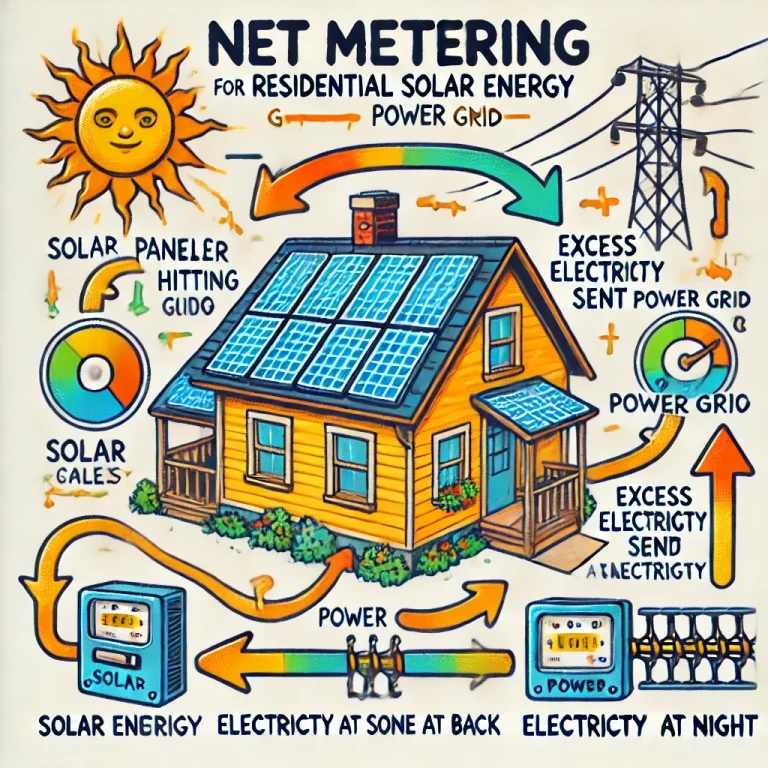
Why go solar?
Switching to solar energy is one of the best financial and environmental decisions you can make. Whether you’re looking to save money, reduce your carbon footprint, or gain energy independence, here’s why going solar is a smart move:
💰 1. Save Money on Electricity Bills
- Solar panels can drastically lower or eliminate your electric bill.
- With net metering, you earn credits for excess energy sent to the grid.
- Most systems pay for themselves within 5-12 years, and panels last 25+ years—that’s decades of free power!
🌞 2. Solar Works Everywhere
- Whether you live in sunny Arizona or cloudy New York, solar still generates power!
- Even in cooler climates, solar panels are highly efficient and work better in cold temperatures.
- Advances in solar technology mean more energy production in all conditions.
⚡ 3. Energy Independence & Protection from Rate Hikes
- Utility rates increase every year—solar lets you lock in low energy costs.
- With battery storage, you can power your home even during blackouts.
- Take control of your energy instead of relying on big power companies.
🌎 4. Help the Environment & Fight Climate Change
- Solar energy is 100% renewable and emission-free.
- Reduces your carbon footprint and dependence on fossil fuels.
- Helps fight climate change and contributes to cleaner air and water.
🏡 5. Increase Your Home’s Value
- Solar homes sell for more and faster than homes without solar.
- Property tax exemptions in many states mean you gain value without higher taxes.
- A solar system is a long-term investment in your home’s future.
🔋 6. Take Advantage of Solar Incentives & Tax Credits
- 30% Federal Solar Tax Credit – Get 30% of your solar costs back through 2032.
- State & Local Incentives – Many states offer rebates, grants, and tax exemptions.
- Solar Financing Options – No-money-down financing and solar loans make going solar easy.
🚀 7. It’s Easier & More Affordable Than Ever
- The cost of solar has dropped over 80% in the last decade.
- Most homeowners can install solar with $0 down and see savings immediately.
- With more financing options, solar is accessible to more people than ever.
Is Solar Worth It for You?
✅ Yes! If you want to save money, protect yourself from rising electricity costs, and help the environment, solar is a no-brainer.

How solar works
Residential solar works by converting sunlight into electricity that can power your home. Here’s a simple breakdown of the process:
1. Solar Panels Capture Sunlight
- Photovoltaic (PV) solar panels, typically mounted on a roof, absorb sunlight and convert it into direct current (DC) electricity.
2. Inverter Converts Energy
- Since most homes use alternating current (AC) electricity, a solar inverter converts the DC electricity from the panels into usable AC power.
3. Power Your Home
- The AC electricity is then sent to your home’s electrical panel, where it powers appliances, lights, and other electrical devices.
4. Net Metering & Energy Storage
- If your solar panels generate more electricity than you need, the excess power can be sent back to the grid (earning you credits via net metering) or stored in a solar battery for later use.
5. Using Grid Electricity (If Needed)
- When your solar panels don’t produce enough electricity (like at night), you can still pull power from the grid unless you have battery storage to supply your needs.

How does Net Metering Work?
Net metering is a billing system that allows homeowners with solar panels to send excess electricity back to the power grid in exchange for credits. Here’s how it works step by step:
1. Solar Panels Generate Electricity
- During the day, solar panels may produce more electricity than your home uses.
2. Excess Energy Goes to the Grid
- The extra electricity is sent to the utility grid, and your electric meter runs backward, giving you credits for the power you supply.
3. Drawing Power from the Grid
- At night or on cloudy days, when your solar panels don’t generate enough electricity, your home pulls power from the grid as usual.
4. Offsetting Your Bill
- The credits from the extra power you sent to the grid offset the electricity you use when your solar system isn’t producing enough, reducing or even eliminating your utility bill.
5. Yearly or Monthly True-Up
- Depending on your state and utility company, any remaining credits may roll over monthly or be settled at the end of the year. Some utilities pay for excess power, but the rates vary.

How does Solar Battery storage work?
Solar battery storage works by capturing excess electricity generated by solar panels and storing it for later use. Here’s how it works step by step:
- Solar Energy Generation – Solar panels convert sunlight into electricity in the form of direct current (DC).
- Energy Conversion – The inverter converts DC electricity into alternating current (AC), which powers your home.
- Battery Charging – When your solar panels produce more electricity than your home needs, the excess energy is directed to charge the battery.
- Energy Storage – The battery stores electricity for later use, such as during the night or during power outages.
- Energy Use – When solar production is low (at night or on cloudy days), the battery releases stored energy to power your home.
- Grid Connection (if applicable) – If your system is connected to the grid, you can still draw power from it when needed or sell excess energy back to the utility through net metering.
©Copyright. All rights reserved.
We need your consent to load the translations
We use a third-party service to translate the website content that may collect data about your activity. Please review the details in the privacy policy and accept the service to view the translations.
